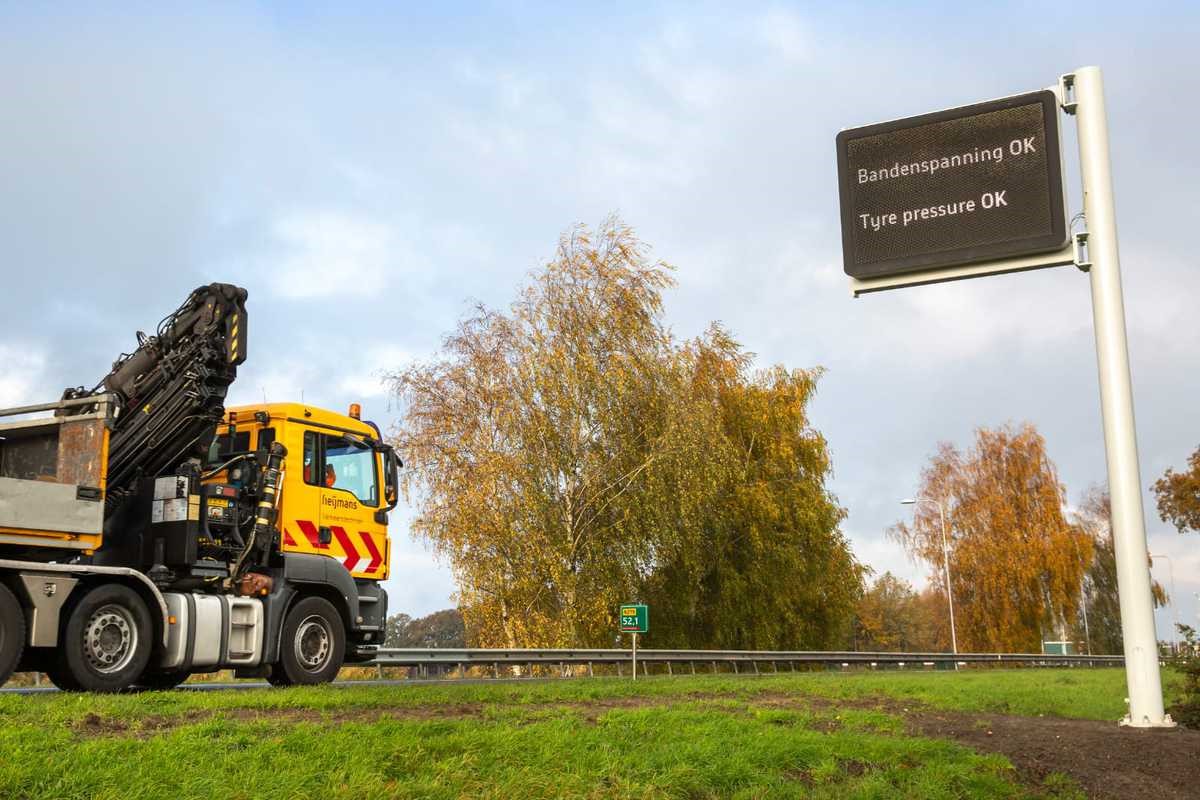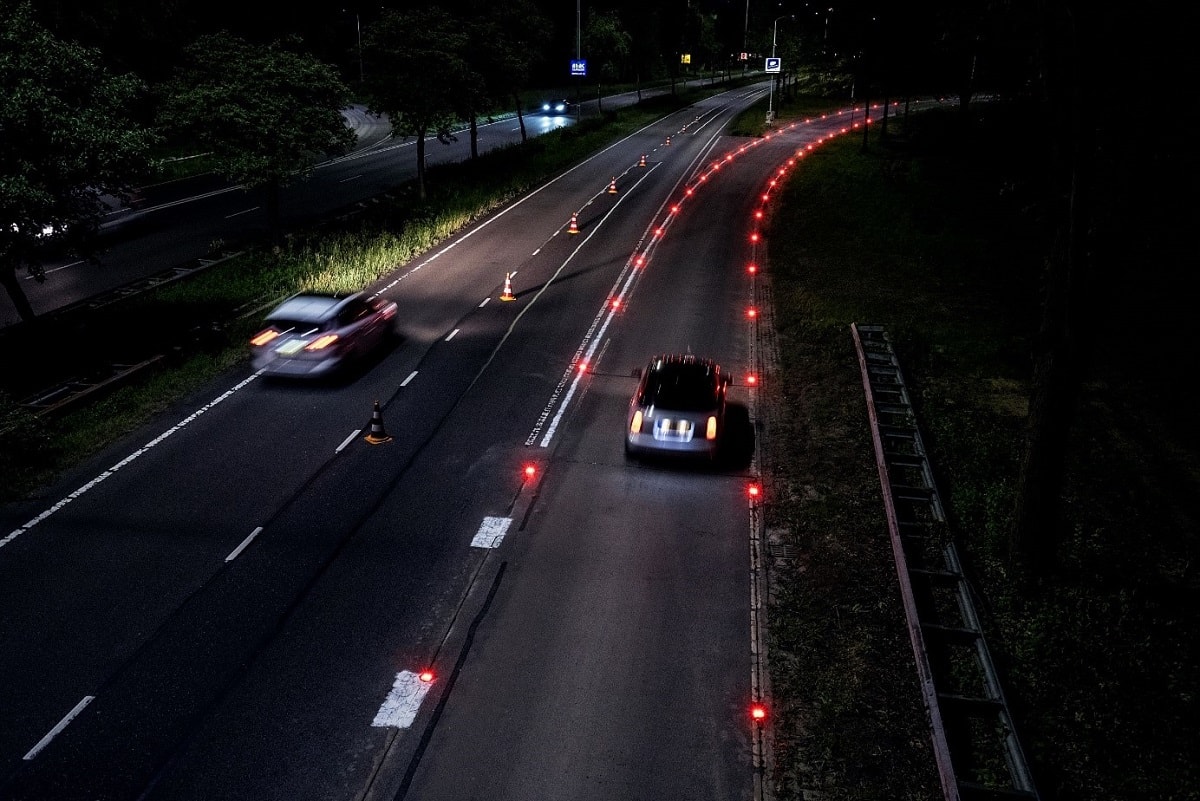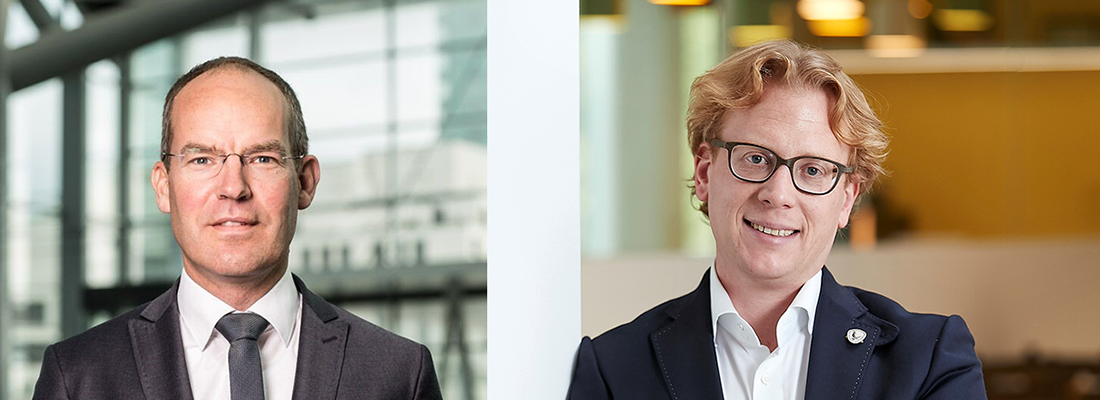SPEEDING UP THE MOBILITY TRANSITION: Bart Smolders & Coen Sanderink, Heijmans
‘Thanks to data we give our infrastructure a heartbeat.’
With the continuous growth of the population and ongoing urbanization there are numerous mobility challenges. Sustainability, safety and societal impact are amongst our daily concerns. We need to speed up the mobility transition to keep up with the fast changing global dynamics, which requires inventive approaches and better solutions. In this series we share inspiring and innovative cases from all over the world. We talk about the newest developments in smart infrastructure with Bart Smolders, Chairman of Heijmans Infra and Coen Sanderink, Business Developer Digital Infra. How do they speed up the mobility transition?
Over the past years the Dutch company Heijmans employing 4,500 people, built many infrastructural projects in the Netherlands. As creator of a healthy living environment, Heijmans increasingly has more access to sensors that generate real-time data on the use and the state of our infrastructure and the quality of our living environment. The next step is to translate all these data into something that is really useful. This data driven infrastructure attracts new players in the software and data market and forces Heijmans to think about its place in the (new) value chain and future business models.
Bart Smolders kicks off: A lot of people think of us as a construction company only, but I prefer to tell people we are developing into a technology company with a focus on construction, real estate and infrastructure. Heijmans’ purpose is to build a healthy living environment through the development of infrastructure, mobility and energy. How can Heijmans help people in travelling from A to B as comfortable as possible on infrastructure in excellent condition? By improving continuously and becoming smarter and more sustainable. Our biggest goal in speeding up the mobility transition is to facilitate this.
‘As a technology company with a focus on construction, real estate and infrastructure, we digitize what we make.’
Digital technology helps us do that. And it allows us to work more circularly, perform efficient maintenance and generate sustainable energy. Think of material-exchange platforms, noise barriers with solar panels and ways to warn road users or to divert in case of traffic. We digitize what we make. Before we install a kilometre of asphalt, we first build the road digitally. By testing it on all sides, we reduce failure costs. Our director of Infra Sander Dekker likes to compare it to Max Verstappen: he is also in a simulator all week before making his rounds on the track.
The next step is to measure use and behaviour of the assets that we build and interpret that data. We do this by installing sensors in roads, tunnels and bridges. These sensors retrieve data that monitor the impact on the infrastructure. By transforming this data into information we can predict lifespan. This is important because as a construction company we are increasingly responsible for management and maintenance of our roads and assets over a longer period of time.
‘When we designed and built the assets, we did not know today we would be shopping online, with more trucks having more load on our assets.’
Coen Sanderink continues: The Netherlands is packed with infrastructure that helps to keep our country on the move. People, vehicles, materials and information; they all move en masse within our 24-hour economy. This only works with infrastructural connections that are in top condition and function in close cohesion with each other. We can generate energy using roads and noise barriers, and realise better safety and traffic flow by using smart technology that warns road users. Our roads, bridges, tunnels and residential areas have a lot ‘to tell us’. This infrastructure offers gigabytes of data.
There are three projects in which data have become very important or even leading. First is monitoring our assets. Before data, we had to measure the status of a bridge or viaduct through calculations in order to decide whether the bridge needed renovation or rebuilding. A very important and accurate job, as calculation is still partly based on assumptions. When we designed and built the assets, we did not know that today we would be shopping online so much. With more and more heavy vehicles driving in and out of a city, assets require more maintenance. Thanks to data, we can become smarter. Where we first relied on theoretical models, today we can actually monitor and know what the status of a construction or a road really is, real-time. A technique that has only been available since six years. Through data we can now for instance show that the status of assets deviates from what was calculated and that it needs maintenance at an earlier or later stage.
‘40% of all traffic accidents in Noord-Brabant are caused by low tyre pressure.’
A second project involves measuring the tyre pressure of heavy vehicles and trucks in the Province of Noord-Brabant. Bart Smolders: Did you know in that province 40% of all accidents with trucks are caused by low tyre pressure? The correct tyre pressure proves to be an important indicator of traffic flow, safety and durability. With the correct tyre pressure, trucks are less likely to cause traffic jams and accidents, there is less wear on infrastructure and it reduces up to 3% fuel costs. This then results in a reduction in CO2 emission.
In November 2019, we started to measure the tyre pressure of 2,000 trucks by smart tyre pressure gauge together with SmartwayZ. Based on our knowledge and experience, we link sensors in the road surface to a data platform. When driving over the road sensor, it indicates whether the pressure is good or too low. If the pressure is not OK, we send the chauffeur a message via matrix signs and in the future on the dashboard of in the cabin of the truck. This is an example of Heijmans’ contribution to a healthy living environment.

A third project where we implement data tools is called MeBeSafe, in Eindhoven. In this project Heijmans is helping to address the issue of road safety at a European level. ‘Measures for Behaving Safely in Traffic’ is an EU-funded research project based on ’nudging’. Through nudging you try to teach people about their behaviour in order to change that behaviour. Within this project partners work together to develop and test solutions to nudge car drivers and cyclists towards safer behaviour in common traffic situations that carry an elevated risk.
‘In Eindhoven smart lighting in asphalt signals drivers when passing through a sharp bend too fast.’
In Eindhoven the question rose: How can we decrease the number of traffic accidents on an exit where drivers often speed? In the MeBeSafe project, the driver is alerted when approaching dangerous or complex traffic situations through influencing the driving behaviour and speed by using smart lighting in and around the road infrastructure. When a driver passes a high alert intersection through a sharp bend too fast, the LED signals and detectors in the asphalt lighten up red. This is our way of encouraging motorists to adopt the right driving behaviour at the right moment, so their safety, and that of other road users, can be ensured.

‘Data helps us to improve road safety and enables us to scale up.’
We use data technology to reinforce the concept of a vital infrastructure and healthy mobility. This shows how we digitize what we make. And the next step is to make algorithms based on that data. Not only does it then improve our road safety and maintenance, it also enables us to scale up and find new business models.
We develop software in such a way that it can be shared and for others to use it. All the algorithms are developed in house by approximately 30 software engineers. We deliberately keep this new business within our internal process. Infrastructure is our core knowledge, our domain knowledge. We want to be able to use data that comes from infrastructure and combine software domain knowledge with construction and hardware knowledge. Software engineers are speaking a different language and combining this with our builders of roads and bridges has already led to interesting projects. This is our contribution to the mobility transition: to be able to use infrastructure increasingly smarter.
In the last 5-10 years we developed two new propositions:
- Smart operator: smart sensors in cities to help people taking part in traffic (projects described above)
- Digital services: data that can be used by others and this data can be bought by customers
‘Every day, I drive to work, on (intelligent) infrastructure shaped by the company I work for.’
The last proposition is still new to us and we are in the midst of finalizing the revenue model for it, something I find very interesting. This is the future for Heijmans. Heijmans is the technology company with a focus on infrastructure and construction. Not the other way around. Before I started working at Heijmans, I never realised that Heijmans is actually a company that shapes our world. Every day, I drive to work, on (intelligent) infrastructure shaped by the company I work for. And it is great to improve society and to live healthier thanks to new infrastructure technologies. It’s really cool to see that a construction company that has been around for 100 years is taking a new path. Of course that is not always easy, but change is in Heijmans’ DNA. And that drives me every day.
‘Contribute to a healthy living environment is what I get up for every morning'
Smolders: As mentioned before, Heijmans has a major societal purpose and this will only increase in the future. Our roads, highways, buildings need to become sustainable and smart in order to serve the public in best way possible and offer a healthy living environment. Our new propositions are going to be in the forefront of that purpose. Sharing knowledge through data. We already notice that local governments see Heijmans as a long-term partner, not only in maintenance, but for example also in improving traffic flow. In the east of the Netherlands close to the border with Germany we monitor and improve the traffic flow through smart traffic light systems in cooperation with SWECO. It is great to contribute to a healthy living environment by speeding up both the energy and mobility transition. This is what I get up for every morning.
‘We are giving our building constructions a heartbeat.’
Check this out: By converting data into sound patterns (sonification) we are giving our building constructions a heartbeat, and making the underlying digital world tangible. Artist and producer LudoWic translated data from our assets into a warm heartbeat bringing our infrastructure to life. Together we developed Bits & Beats, a concept where we make data and innovation tangible.
Share your story
Do you have an innovation, research results or an other interesting topic you would like to share with the professionals in the infrastructure, traffic management, safety, smart mobility and parking industry? The Intertraffic website and social media channels are a great platform to showcase your stories!
Please contact our Sr Brand Marketing Manager Carola Jansen-Young.
Are you an Intertraffic exhibitor?
Make sure you add your latest press releases to your Company Profile in the Exhibitor Portal for free exposure.





